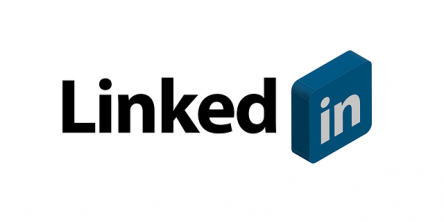The Cost Breakdown of Running an Influencer Campaign

There’s never been more interest (or money) behind influencer marketing. It’s now a $24 billion industry and a standard line item in 26% of brand and agency marketing budgets.
At a glance, you may think you only need to find someone with a big following, send them your product, and watch the sales roll in. If only it were that simple.
Influencer marketing can absolutely move the needle. But it comes with a price tag. Between negotiation, content creation, usage rights, rising TikTok influencer rates, management fees, and performance tracking, those “free product for a post” days are long gone.
And the minute you scale beyond one or two influencers, the spend (and complexity) multiplies.
Too many brands dive in without knowing where their influencer marketing budget is going. They end up with overpriced posts, underwhelming results, and missed opportunities to repurpose high-quality content.
In this post, we’ll break down the actual cost of an influencer campaign. By the end, you’ll have a clearer idea of what to expect, what to watch for, and where your money should be going.
Influencer Fees: What They Charge and Why
Your biggest cost will almost always be creator fees. But influencer campaign cost isn’t one-size-fits-all. Rates shift based on platform, deliverables, and production value.
Here’s what usually drives the price:
● Content creation (time, skill, equipment)
● Publishing/posting on a specific platform
● Usage rights (can your brand use the content in ads?)
● Exclusivity (are they restricted from working with competitors?)
● Deliverables (1 Reel + 1 Story + 1 Link in bio, etc.)
● Revisions or edits, if negotiated
● Campaign reporting or performance stats, if included
Content creation on video-heavy platforms is typically more expensive. YouTube influencer pricing often runs higher due to longer production times and higher viewer engagement. TikTok influencer rates are also on the rise, especially for creators known for viral or trend-driven content. Even Instagram influencer costs can climb quickly if you're asking for multiple posts, high-end visuals, or full usage rights.
Exclusivity and long-term collaborations can increase the fee, but they also give you more control over the message and the timeline. The more you want, the more you’ll spend.
Product Seeding & Gifting (Yes, It’s Still a Cost)
Sending out free products is a common tactic, particularly with micro-influencer pricing on the lower end. But it's not free.
You’re covering the production value of the product itself, plus packaging, shipping, and any extras that help make a stronger impression (handwritten notes, branded inserts, or custom boxes). In product-heavy categories like skincare, food, or lifestyle, brands usually send more than one item to create a full experience. It adds up.
Many brands overlook this part of the campaign, treating the product as a sunk cost or assuming it doesn't count because it’s not a direct payment. But every box you send out should serve a clear purpose.
Whether you're looking for user-generated content, early buzz before a full campaign, or product feedback, the goal needs to be defined. Otherwise, you’re just giving inventory away.
Content Creation
Strong content doesn’t happen by chance. Every influencer campaign needs clear, high-quality creative, and someone has to put in the time to make that happen.
When influencers handle content, you’re paying for more than their reach. The cost reflects the effort involved in planning, shooting, editing, and polishing the final result. High-effort formats like professional photography, long-form videos, or location shoots naturally come with higher fees.
If you also plan to repost that content on your brand’s channels, you may need to pay additional licensing fees for that access.
In-house content creation brings its own costs. You’ll need time from your creative team (photographers, editors, designers, and writers) to script, shoot, and finalize assets. A short video or simple social post also requires planning, direction, and rounds of revision.
The more polished and strategic your content needs to be, the more it’s going to cost. Good creatives are an investment, and in influencer marketing, it can make or break your campaign’s performance.
Licensing and Usage Rights
This is one of the most overlooked (and expensive) surprises in influencer marketing.
Just because a creator posts about your product doesn’t mean you can freely reuse that content. If you plan to share their video on your brand’s feed, use their photo in an ad, or feature their story on your website, you’ll need permission in the form of usage rights.
Some influencers will build it into their rate, especially for organic reposting. Others charge separately, depending on how and where you plan to use the content. Reposting on social media is one thing. Running paid ads or using the creator’s likeness in a campaign is a much bigger deal, and priced accordingly.
Without proper licensing, your content might get flagged, removed, or lead to legal trouble. Always make sure usage rights are clearly defined before the content goes live.
H2: Management & Coordination: The Behind-the-Scenes Cost
Even small influencer campaigns require time-consuming logistics:
● Vetting influencers
● Negotiating rates and deliverables
● Drafting contracts
● Managing product shipments
● Reviewing drafts
● Approving captions and posts
● Monitoring live content
● Following up on missed deadlines
● Reporting on performance
Whether you're managing this in-house or through a full-stack influencer marketing agency, make room in your influencer marketing budget for coordination time.
Paid Boosting
Boosting influencer content is one of the most effective ways to extend your campaign’s reach. Instead of relying solely on organic exposure, you can turn a creator’s post into a paid ad that runs directly from their handle.
An approach like this tends to drive better results than ads coming from a brand account, simply because the content feels more authentic and the audience already trusts the source.
To make this work, you’ll need the influencer’s permission and proper usage rights in place. The technical setup requires access through platforms like Meta for Business, along with time spent on creative adjustments, targeting, and performance optimization.
While this tactic can stretch the value of each post, it still requires a separate budget and dedicated resources to manage.
Performance Tracking and Analytics
Tracking results is the only way to know if your influencer campaigns are working. Brands focused on revenue, conversions, or long-term growth can't afford to treat performance as an afterthought.
Campaign tracking typically involves a mix of tools and setups, such as:
● UTM links or custom landing pages
● Promo codes or affiliate links
● Analytics dashboards
● Attribution tracking
● Post-campaign reports
Some brands rely on their internal marketing or data teams to manage this. Others use third-party platforms to centralize campaign performance and reporting.
Strong performance tracking helps you refine your influencer strategy, identify your top-performing creators, and make better decisions moving forward. Running one well-tracked campaign beats running five that deliver zero usable insight.
Miscellaneous Costs
Depending on the campaign, you may also need to budget for:
● Contractor fees (e.g., freelance creative help)
● Giveaway prizes or event hosting
● Travel or accommodation (if shooting on-location)
● Platform access fees (if using influencer databases or matchmaking tools)
● Legal review or contract drafting
Leaving some breathing room for the unexpected helps avoid surprises later on.
How to Stretch Your Budget Further
Working with a smaller influencer marketing budget doesn’t mean settling for weak results. It just requires more strategic planning.
● Prioritize creators with high engagement over large follower counts. Better performance, lower cost.
● Negotiate for usage rights up front to repurpose content later.
● Batch outreach and create templates to save time on coordination.
● Use UGC and paid boosting to squeeze more value from each post.
● Set clear goals (traffic, sales, awareness) before you spend a dollar.
Micro-Influencer Pricing: Is Smaller Better?
If you’re working with a lean budget or launching a niche product, micro-influencers might be your best bet.
With 10K–50K followers, these creators often charge less per post but deliver stronger engagement and higher trust with their audience. Micro-influencer pricing usually falls between $300 and $1,000 per deliverable depending on the platform and niche.
Don’t underestimate the power of running campaigns with 10–20 micro-influencers instead of one macro influencer. It gives you broader coverage and authentic content with grassroots reach.
Final Thoughts
Short answer: yes, when done correctly.
A well-run influencer campaign gives you storytelling, social proof, and evergreen content. But to make it work, you need a budget that reflects the real cost of quality creators.
Instead of chasing “cheap” posts or inflated vanity metrics, focus on building partnerships with creators who align with your brand values and audience goals. Think of it like hiring content partners, not just renting feeds.
When you know what you’re paying for (and what to expect in return) you’ll make better decisions, avoid common budget traps, and get the best results from your investment.
Similar Articles
Commercial insurance isn’t exactly impulse-buy territory. It’s complex, heavily relationship-driven, and often tied to longer sales cycles
Discover key traits to look for in a B2B digital marketing agency that leverages AI to drive growth, efficiency, and smarter strategies.
Find the best marketing solutions to match your goals, reach your audience, and drive lasting business growth with smart, flexible strategies.
Live chat tools provide real-time language directly from your prospects; an untapped goldmine for marketing insights.
Sustainability isn't a trend anymore; it's the baseline. But somehow, there's still this idea floating around that eco-friendly events have to look plain or feel a bit worthy
Over the last decade, digital signatures have gone from a niche productivity hack to a business essential. Companies use them to close contracts, approve internal documents, onboard customers, and manage compliance
Digital marketing is an essential strategy for businesses looking to grow their online presence and increase sales. However, many businesses, including well-established digital marketing companies, often make mistakes that hinder their success.
Marketing agencies face unique financial challenges that can make or break their growth. Between managing client retainers, tracking billable hours, and handling project-based budgets, the financial complexity increases as the agency expands.
If you are looking to expand your business into another country, you are making a great step but it is important to plan carefully. A business plan summarizes the objectives, problems, and a complete strategy to break into a new market.









